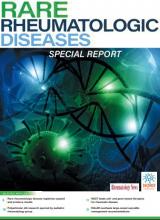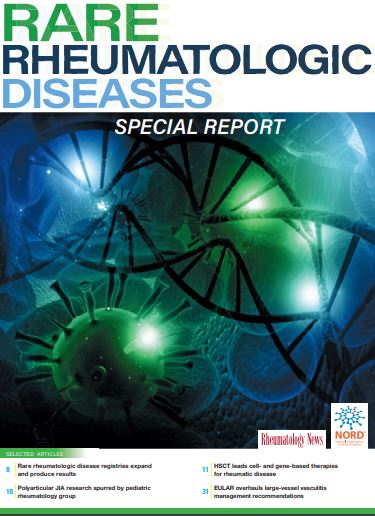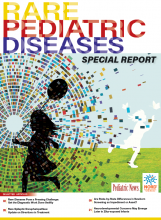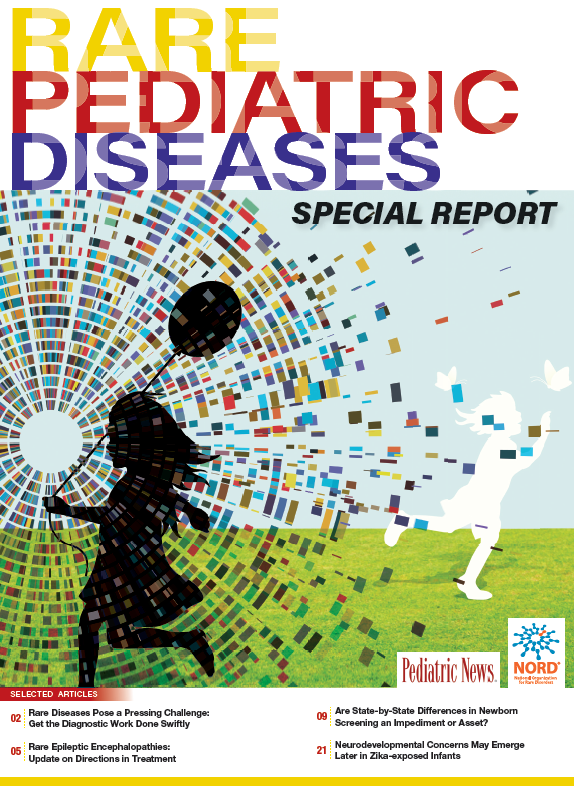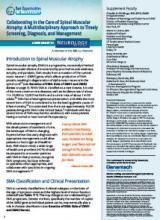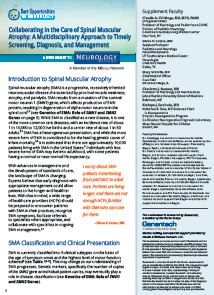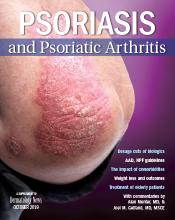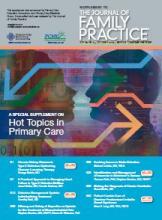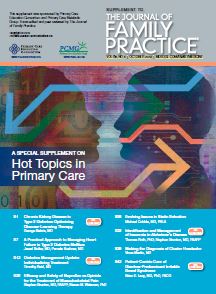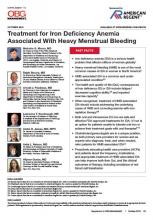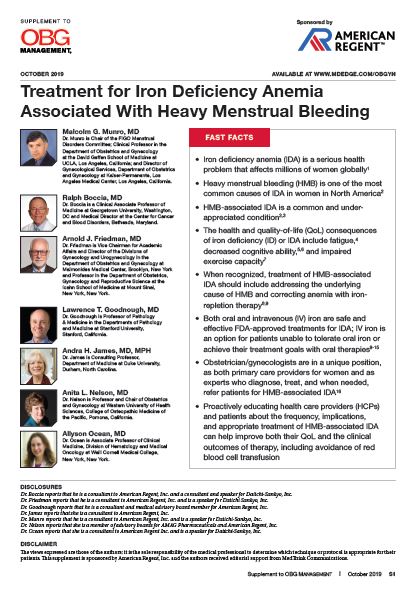User login
Rare Rheumatologic Diseases Special Report 2019
Rare Pediatric Diseases Special Report 2019
Collaborating in the Care of Spinal Muscular Atrophy: A Multidisciplinary Approach to Timely Screening, Diagnosis, and Management
How prepared are you to recognize and meet the needs of patients with spinal muscular atrophy?
Learn more about spinal muscular atrophy in this supplement to Neurology Reviews.
Click here to read.
Supplement Faculty
How prepared are you to recognize and meet the needs of patients with spinal muscular atrophy?
Learn more about spinal muscular atrophy in this supplement to Neurology Reviews.
Click here to read.
Supplement Faculty
How prepared are you to recognize and meet the needs of patients with spinal muscular atrophy?
Learn more about spinal muscular atrophy in this supplement to Neurology Reviews.
Click here to read.
Supplement Faculty
Psoriasis & Psoriatic Arthritis: A Supplement
This Psoriasis and Psoriatic Arthritis supplement to Dermatology News includes commentary from Alan Menter, MD, and Joel M. Gelfand, MD. Highlights include: Dosage cuts of biologics; AAD/NPF guidelines; the impact of comorbidities; weight loss and outcomes; and treatment of elderly patients.
This Psoriasis and Psoriatic Arthritis supplement to Dermatology News includes commentary from Alan Menter, MD, and Joel M. Gelfand, MD. Highlights include: Dosage cuts of biologics; AAD/NPF guidelines; the impact of comorbidities; weight loss and outcomes; and treatment of elderly patients.
This Psoriasis and Psoriatic Arthritis supplement to Dermatology News includes commentary from Alan Menter, MD, and Joel M. Gelfand, MD. Highlights include: Dosage cuts of biologics; AAD/NPF guidelines; the impact of comorbidities; weight loss and outcomes; and treatment of elderly patients.
Federal Health Care Cancer Data Trends 2019
Click here to access Federal Health Care Cancer Data Trends 2019
Table of Contents
- Introduction
- Cancer in the VA: The Big Picture
- Hepatocellular Carcinoma
- Prostate Cancer
- Multiple Myeloma
- Lung Cancer in the VA at a National Level
- Lung Cancer – Regional Snapshot: Kansas City VA
- Colorectal Cancer
- Leukemias
- Lymphomas
- Renal Cell Carcinoma
- Bladder Cancer
- Afterword
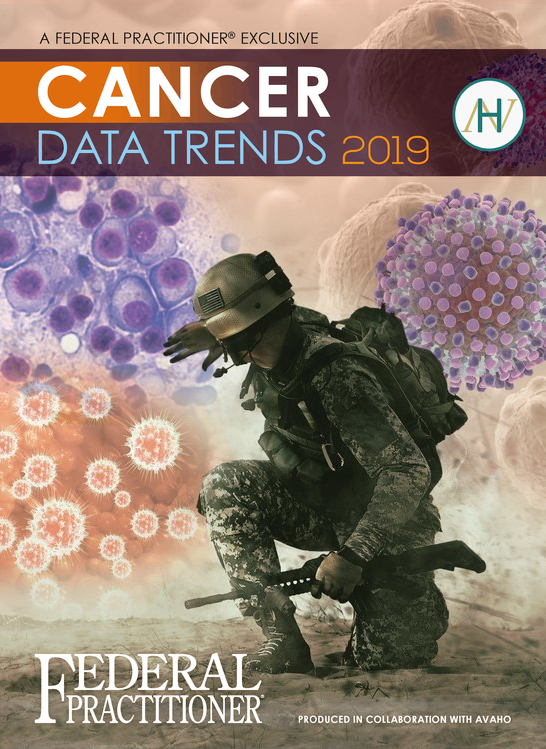
Click here to access Federal Health Care Cancer Data Trends 2019
Table of Contents
- Introduction
- Cancer in the VA: The Big Picture
- Hepatocellular Carcinoma
- Prostate Cancer
- Multiple Myeloma
- Lung Cancer in the VA at a National Level
- Lung Cancer – Regional Snapshot: Kansas City VA
- Colorectal Cancer
- Leukemias
- Lymphomas
- Renal Cell Carcinoma
- Bladder Cancer
- Afterword

Click here to access Federal Health Care Cancer Data Trends 2019
Table of Contents
- Introduction
- Cancer in the VA: The Big Picture
- Hepatocellular Carcinoma
- Prostate Cancer
- Multiple Myeloma
- Lung Cancer in the VA at a National Level
- Lung Cancer – Regional Snapshot: Kansas City VA
- Colorectal Cancer
- Leukemias
- Lymphomas
- Renal Cell Carcinoma
- Bladder Cancer
- Afterword

Treatment of Unresectable Stage III Non-small Cell Lung Cancer
With a recent renaissance in cancer diagnostics and treatment, there is hope for many fighting the disease. In this article, Dr. M. Patricia Rivera discusses screening and diagnostic procedures as well as the treatment options that are available for patients with unresectable stage III non-small cell lung cancer.
This article is sponsored by AstraZeneca.
US-33194 Last Updated 9/19
With a recent renaissance in cancer diagnostics and treatment, there is hope for many fighting the disease. In this article, Dr. M. Patricia Rivera discusses screening and diagnostic procedures as well as the treatment options that are available for patients with unresectable stage III non-small cell lung cancer.
This article is sponsored by AstraZeneca.
US-33194 Last Updated 9/19
With a recent renaissance in cancer diagnostics and treatment, there is hope for many fighting the disease. In this article, Dr. M. Patricia Rivera discusses screening and diagnostic procedures as well as the treatment options that are available for patients with unresectable stage III non-small cell lung cancer.
This article is sponsored by AstraZeneca.
US-33194 Last Updated 9/19
Hot Topics in Primary Care 2019
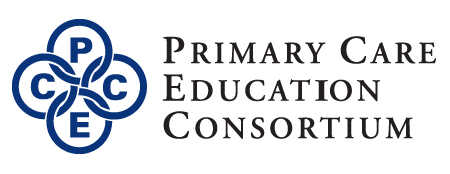

Click here to read Hot Topics in Primary Care.
This supplement includes 4 CME credits (scroll down for more information).
Topics include:
- Chronic Kidney Disease in Type 2 Diabetes
- Heart Failure in Type 2 Diabetes
- Diabetes Management
- Naproxen vs Opioids
- Statin Selection
- Insomnia in Alzheimer's Disease
- Cluster Headache
- Irritable Bowel Syndrome
This supplement offers the opportunity to earn a total of 4 CME credits.
Credit is awarded for scucesful completion of the online evaluations at the links below. These links may also be found within the supplement on the first page of each article.
- Chronic Kidney Disease in Type 2 Diabetes: Optimizing Glucose-Lowering Therapy
- To receive CME credit, please read the journal article and, upon completion, go to www.pceconsortium.org/DKD to complete the online post-test and receive your certificate of credit.
- Diabetes Management Update: Individualizing Treatment
- To receive CME credit, please read the journal article and, upon completion, go to www.pceconsortium.org/DM to complete the online post-test and receive your certificate of credit.
- Identification and Management of Insomnia in Alzheimer's Disease
- To receive CME credit, please read the journal article and, upon completion, go to www.pceconsortium.org/insomnia to complete the online post-test and receive your certificate of credit.
- Patient-Centric Care of Diarrhea-Predominant Irritable Bowel Syndrome
- To receive CME credit, please read the journal article and, upon completion, go to www.pceconsortium.org/IBSD to complete the online post-test and receive your certificate of credit.


Click here to read Hot Topics in Primary Care.
This supplement includes 4 CME credits (scroll down for more information).
Topics include:
- Chronic Kidney Disease in Type 2 Diabetes
- Heart Failure in Type 2 Diabetes
- Diabetes Management
- Naproxen vs Opioids
- Statin Selection
- Insomnia in Alzheimer's Disease
- Cluster Headache
- Irritable Bowel Syndrome
This supplement offers the opportunity to earn a total of 4 CME credits.
Credit is awarded for scucesful completion of the online evaluations at the links below. These links may also be found within the supplement on the first page of each article.
- Chronic Kidney Disease in Type 2 Diabetes: Optimizing Glucose-Lowering Therapy
- To receive CME credit, please read the journal article and, upon completion, go to www.pceconsortium.org/DKD to complete the online post-test and receive your certificate of credit.
- Diabetes Management Update: Individualizing Treatment
- To receive CME credit, please read the journal article and, upon completion, go to www.pceconsortium.org/DM to complete the online post-test and receive your certificate of credit.
- Identification and Management of Insomnia in Alzheimer's Disease
- To receive CME credit, please read the journal article and, upon completion, go to www.pceconsortium.org/insomnia to complete the online post-test and receive your certificate of credit.
- Patient-Centric Care of Diarrhea-Predominant Irritable Bowel Syndrome
- To receive CME credit, please read the journal article and, upon completion, go to www.pceconsortium.org/IBSD to complete the online post-test and receive your certificate of credit.


Click here to read Hot Topics in Primary Care.
This supplement includes 4 CME credits (scroll down for more information).
Topics include:
- Chronic Kidney Disease in Type 2 Diabetes
- Heart Failure in Type 2 Diabetes
- Diabetes Management
- Naproxen vs Opioids
- Statin Selection
- Insomnia in Alzheimer's Disease
- Cluster Headache
- Irritable Bowel Syndrome
This supplement offers the opportunity to earn a total of 4 CME credits.
Credit is awarded for scucesful completion of the online evaluations at the links below. These links may also be found within the supplement on the first page of each article.
- Chronic Kidney Disease in Type 2 Diabetes: Optimizing Glucose-Lowering Therapy
- To receive CME credit, please read the journal article and, upon completion, go to www.pceconsortium.org/DKD to complete the online post-test and receive your certificate of credit.
- Diabetes Management Update: Individualizing Treatment
- To receive CME credit, please read the journal article and, upon completion, go to www.pceconsortium.org/DM to complete the online post-test and receive your certificate of credit.
- Identification and Management of Insomnia in Alzheimer's Disease
- To receive CME credit, please read the journal article and, upon completion, go to www.pceconsortium.org/insomnia to complete the online post-test and receive your certificate of credit.
- Patient-Centric Care of Diarrhea-Predominant Irritable Bowel Syndrome
- To receive CME credit, please read the journal article and, upon completion, go to www.pceconsortium.org/IBSD to complete the online post-test and receive your certificate of credit.
Treatment for Iron Deficiency Anemia Associated With Heavy Menstrual Bleeding
Iron deficiency anemia (IDA) is a serious health problem that affects millions of women globally. Heavy menstrual bleeding (HMB) is one of the most common causes of IDA in women in North America.
In this supplement to OBG Management, the authors describe the signs, symptoms, and laboratory evaluation for HMB and IDA, including a comprehensive diagnostic and treatment algorithm for the practicing physician. The authors also discuss the characteristics of iron-repletion therapies currently available in the United States to help you make the best choice for your patient.
Iron deficiency anemia (IDA) is a serious health problem that affects millions of women globally. Heavy menstrual bleeding (HMB) is one of the most common causes of IDA in women in North America.
In this supplement to OBG Management, the authors describe the signs, symptoms, and laboratory evaluation for HMB and IDA, including a comprehensive diagnostic and treatment algorithm for the practicing physician. The authors also discuss the characteristics of iron-repletion therapies currently available in the United States to help you make the best choice for your patient.
Iron deficiency anemia (IDA) is a serious health problem that affects millions of women globally. Heavy menstrual bleeding (HMB) is one of the most common causes of IDA in women in North America.
In this supplement to OBG Management, the authors describe the signs, symptoms, and laboratory evaluation for HMB and IDA, including a comprehensive diagnostic and treatment algorithm for the practicing physician. The authors also discuss the characteristics of iron-repletion therapies currently available in the United States to help you make the best choice for your patient.
Antibiotic Resistance: What the Dermatologist Needs to Know
Questions include:
What is the potential magnitude of concern regarding antibiotic resistance? Is it clinically relevant to dermatologists in their day-to-day practice?
What can dermatologists do to slow the development of antibiotic resistance?
What is the mutant selection window?
How does the mutant selection window apply to topical antibiotics?
Questions include:
What is the potential magnitude of concern regarding antibiotic resistance? Is it clinically relevant to dermatologists in their day-to-day practice?
What can dermatologists do to slow the development of antibiotic resistance?
What is the mutant selection window?
How does the mutant selection window apply to topical antibiotics?
Questions include:
What is the potential magnitude of concern regarding antibiotic resistance? Is it clinically relevant to dermatologists in their day-to-day practice?
What can dermatologists do to slow the development of antibiotic resistance?
What is the mutant selection window?
How does the mutant selection window apply to topical antibiotics?
